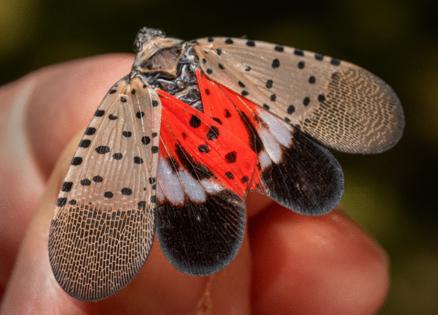Illinois residents encouraged to destroy the eggs of invasive insects to slow spread
Published in News & Features
CHICAGO — While Chicagoans were alarmed to learn the spotted lanternfly had been found in Illinois last year, experts say spring is the time to take action against that insect — as well as another damaging invasive species that has made far more inroads and gotten less attention.
The spongy moth, formerly known as the gypsy moth, has been in Illinois for decades and can strip leaves and kill trees, sometimes defoliating large swaths of land.
Kathryn Bronsky, a national policy manager with the U.S. Department of Agriculture, said while it’s important to stop spongy moths from killing trees in the 20 states in which they are currently established, it’s even more important to limit the insect’s expansion across the United States.
Bronsky said spongy moths usually spread around the country in the form of egg masses.
“Egg masses get laid on everything,” Bronsky said. “They can lay them on your barbeque or your backyard grill, on your patio furniture, things you’d think there’s no way caterpillars could be on.”
Egg masses are usually a cream color, according to Greg Dwyer, a professor of ecology and evolution at the University of Chicago, and appear spongy, with small holes across the surface. Both the spotted lanternfly and the spongy moth lay eggs in masses, but where the lanternfly may lay as many as 60 eggs, the moth can lay up to 1,000.
These eggs begin hatching in spring, and the USDA is encouraging residents to report and destroy any eggs they find before the insects enter more destructive phases.
Dwyer said spongy moths feed on a variety of hardwood trees, including oaks. In some states, including Michigan, the moth has caused significant damage to hundreds of thousands of acres of forest.
“The spongy moth is extremely voracious,” Dwyer said. “And sometimes it gets up to very, very high numbers, and will deploy to vast areas.”
While Dwyer said many insects feed on foliage and trees, the moth poses a particular danger because of its sheer numbers and its preference for hardwood trees. Enough moths can eat the foliage on an entire tree, killing it over several years.
...continued
©2024 Chicago Tribune. Visit at chicagotribune.com. Distributed by Tribune Content Agency, LLC.







Comments